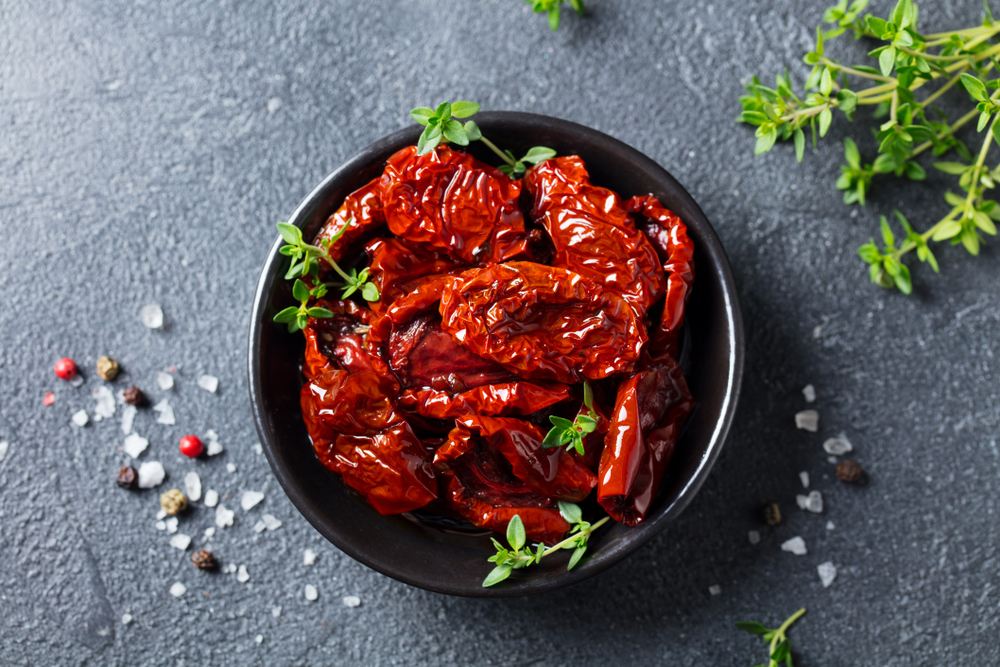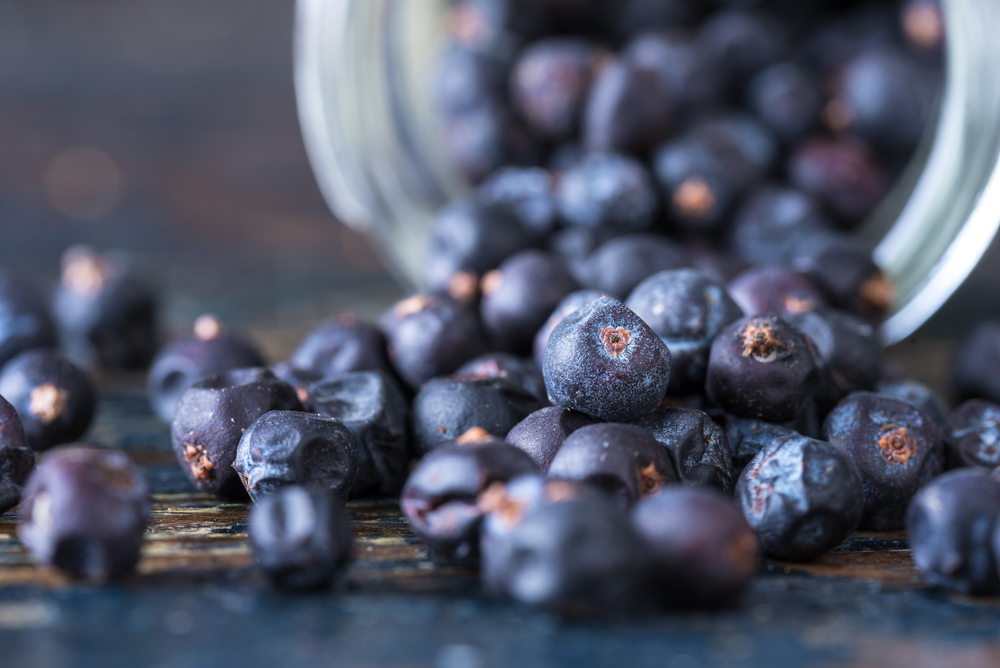I’ve always loved the unique numbing and tingling sensation that Szechuan peppercorns bring to dishes.
But, what happens when you’re out of this peppercorn or can’t find it at your local grocery store? Fear not, there are several Szechuan peppercorn substitutes that you can use in your recipes.
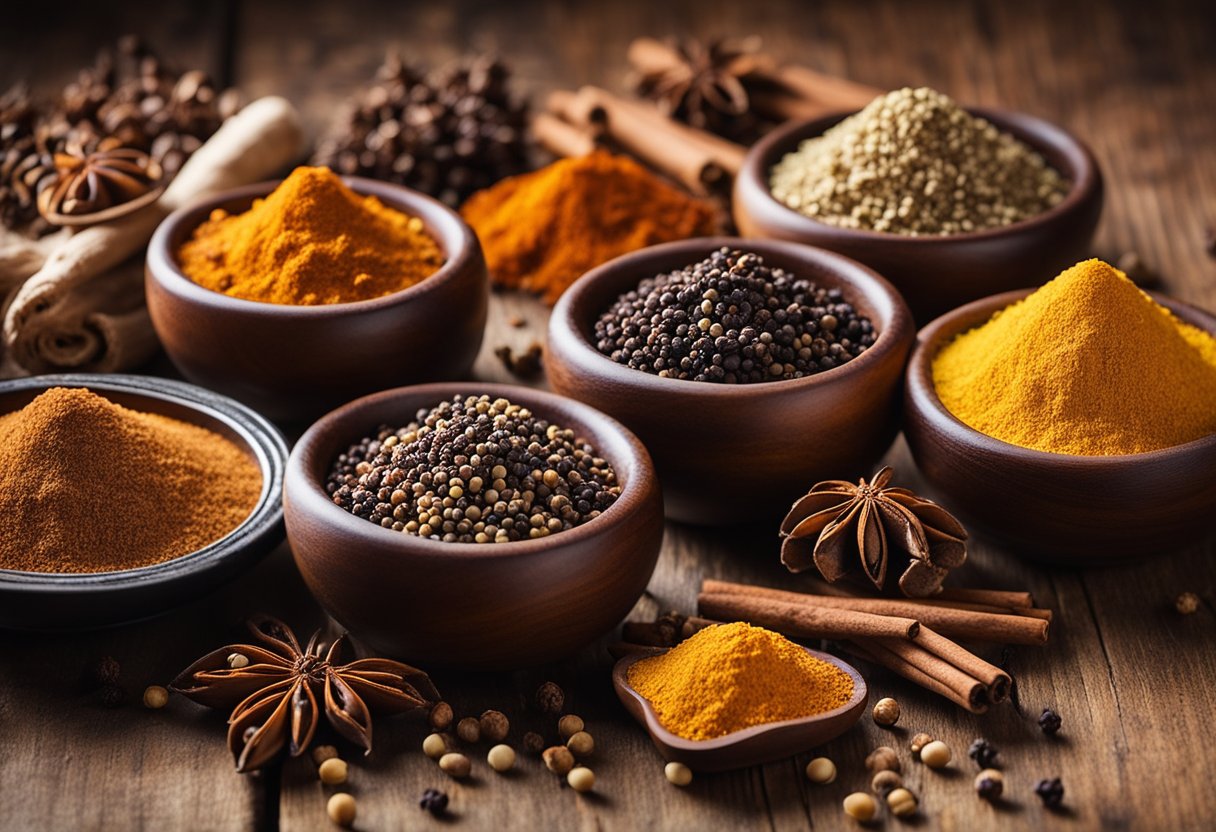
Understanding Szechuan peppercorns is essential to finding the right substitute. Szechuan peppercorns are not actually peppercorns, but the dried husks of the prickly ash tree.
These husks have a unique flavor profile that includes a citrusy, piney taste, followed by a numbing and tingling sensation in the mouth. This sensation is caused by the compound hydroxy-alpha-sanshool, which is not found in other peppercorns.
Common Szechuan peppercorn substitutes include Tasmanian pepper, Grains of paradise, Tellicherry peppercorns, black pepper and coriander seeds.
These substitutes provide a similar flavor profile to Szechuan peppercorns, but may not provide the same numbing and tingling sensation.
Incorporating these substitutes in various dishes can add a new depth of flavor to your cooking and can be a great way to experiment with new ingredients.
Key Takeaways
- Szechuan peppercorns are not actually peppercorns, but the dried husks of the prickly ash tree that provide a unique flavor profile.
- Common Szechuan peppercorn substitutes include Tasmanian pepper, Grains of paradise, Tellicherry peppercorns, black pepper and coriander seeds.
- Incorporating these substitutes in various dishes can add a new depth of flavor to your cooking and can be a great way to experiment with new ingredients.
Understanding Szechuan Peppercorns
Szechuan peppercorns, also known as Sichuan peppercorns or huajiao, are a spice commonly used in Chinese cuisine, particularly in Szechuan cuisine. Despite their name, they are not actually related to black pepper, but instead come from the prickly ash tree.
Szechuan peppercorns have a unique flavor profile that is both spicy and slightly sweet, with a fruity flavor. However, what sets them apart from other spices is their numbing sensation, also known as the “ma” sensation.
This numbing effect is caused by a compound called hydroxy-alpha-sanshool, which stimulates the nerve endings in the mouth.
In addition to their use in cooking, Szechuan peppercorns are also used to make Szechuan peppercorn oil and Szechuan peppercorn salt. These products are often used as condiments or dipping sauces.
It’s worth noting that Szechuan peppercorns were banned in the United States for several years due to concerns over citrus canker disease, but the ban was lifted in 2005.
Overall, Szechuan peppercorns are a unique and flavorful spice that add a distinctive kick to any dish.
Common Szechuan Peppercorn Substitutes
When you don’t have Szechuan peppercorns on hand, there are a variety of substitutes you can use in your cooking. Here are some of the most common:
- Black Pepper: Black pepper is a readily available substitute for Szechuan peppercorns. While it doesn’t have the same numbing effect, it does provide a similar level of heat.
- Tellicherry Pepper: Tellicherry pepper is a type of black pepper that has a slightly fruity flavor and a more complex aroma. It can be used as a 1:1 substitute for Szechuan peppercorns.
- White Pepper: White pepper has a more subtle flavor than black pepper, but it can still be used as a substitute for Szechuan peppercorns in a pinch.
- Pink Peppercorns: Pink peppercorns have a sweet, fruity flavor and a less intense heat than black pepper. They can be used as a substitute for Szechuan peppercorns in dishes where a milder flavor is desired.
- Grains of Paradise: Grains of paradise are a type of seed that have a peppery flavor with hints of citrus and cardamom. They can be used as a substitute for Szechuan peppercorns in dishes where a more complex flavor is desired.
- Sansho Powder: Sansho powder is made from ground Japanese pepper berries and has a tangy, spicy flavor with a citrus hint. It can be used as a substitute for Szechuan peppercorns in a 1:1 ratio.
- Lemon Pepper Seasoning: Lemon pepper seasoning is a blend of black pepper and lemon zest that can be used as a substitute for Szechuan peppercorns in dishes where a citrusy flavor is desired.
- Japanese Seven-Spice Seasoning: Japanese seven-spice seasoning, also known as shichimi togarashi, is a blend of seven spices that includes Szechuan peppercorns. It can be used as a substitute for Szechuan peppercorns in dishes where a complex, spicy flavor is desired.
When substituting for Szechuan peppercorns, keep in mind that each substitute will have its own unique flavor profile. Experiment with different substitutes to find the one that works best for your dish.
Spices with Similar Flavor Profile
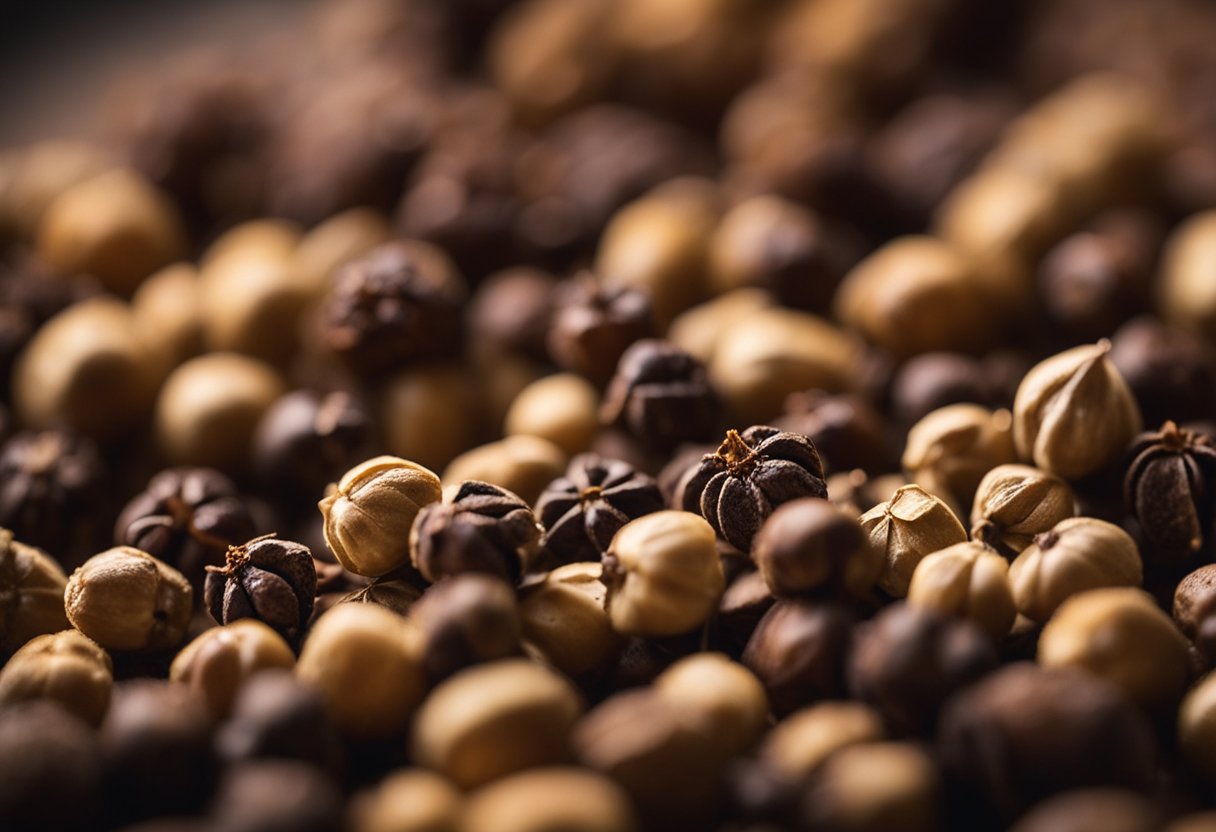
When looking for substitutes for Szechuan peppercorns, it’s important to consider spices with a similar flavor profile. Some of the spices that have similar characteristics include:
Citrus
Citrusy flavors are often found in Szechuan peppercorns, and citrus can be a great substitute. Lemon zest or juice can add a bright, tangy flavor to dishes. Lime zest or juice can also be used for a similar effect.
Pine
Pine is another flavor that can be found in Szechuan peppercorns. Pine nuts or pine needles can be used to add a similar flavor to dishes. Pine nuts are often used in pesto and other Italian dishes, while pine needles are used in Scandinavian cooking.
Woody
Woody flavors are also present in Szechuan peppercorns. Aromatic spices like coriander, cardamom, and clove can add a woody flavor to dishes.
Ground coriander seeds are a great substitute for Szechuan peppercorns, as they have a similar flavor profile.
Aromatic Spice
Aromatic spices like ginger and fennel can also be used as a substitute for Szechuan peppercorns. Ginger is part of the same family as Szechuan peppercorns and can add a similar flavor. Fennel seeds can also be used to add a licorice-like flavor to dishes.
When looking for a substitute for Szechuan peppercorns, it’s important to consider the flavor profile of the spice. By using a spice with similar characteristics, you can achieve a similar flavor in your dishes.
Incorporating Substitutes in Various Dishes
When it comes to incorporating substitutes for Szechuan peppercorns in various dishes, it is important to keep in mind the flavor profile of the dish.
While some substitutes may work well in certain dishes, they may not be suitable for others. Here are some tips on how to incorporate substitutes in various dishes:
Stir-Fries and Noodle Dishes
Stir-fries and noodle dishes are some of the most popular dishes that use Szechuan peppercorns. If you are looking for a substitute, black peppercorns, coriander seeds, and Chinese five-spice powder are all good options.
These substitutes will add a similar heat and spice to your dish, without the numbing sensation that Szechuan peppercorns provide.
Seafood and Vegetables
If you are making a seafood or vegetable dish, you may want to consider using Tasmanian pepper as a substitute for Szechuan peppercorns.
Tasmanian pepper has a similar flavor profile to Szechuan peppercorns, with a slightly sweeter taste. It is also a great substitute for those who are allergic to Szechuan peppercorns.
Meat Dishes
When it comes to meat dishes, black peppercorns and Chinese five-spice powder are both good substitutes for Szechuan peppercorns. These substitutes will add a similar heat and spice to your dish, without the numbing sensation that Szechuan peppercorns provide.
If you are making kung pao chicken or beef, you may want to consider using a combination of black peppercorns and vinegar to achieve the same flavor profile as Szechuan peppercorns.
Overall, there are many substitutes for Szechuan peppercorns that can be used in various dishes. It is important to keep in mind the flavor profile of the dish and choose a substitute that will complement the other ingredients.
With these tips, you can easily incorporate substitutes for Szechuan peppercorns in your favorite dishes.
Geographical Influence on Substitutes
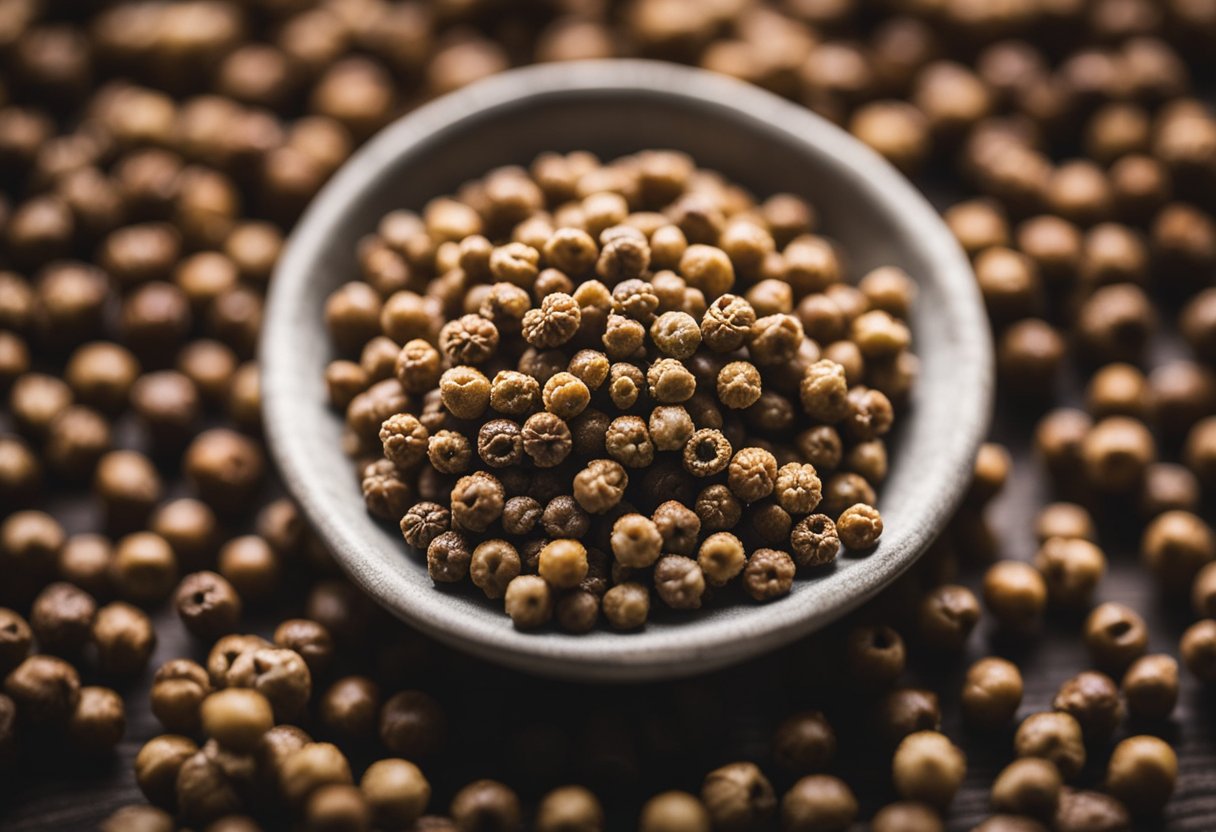
As someone who has experimented with various substitutes for Szechuan peppercorns, I’ve noticed that geographical location can play a significant role in determining which substitutes work best. Here are some of my observations:
India
India has a rich history of using spices in their cuisine, and this is reflected in their availability of spice substitutes. One of the best substitutes for Szechuan peppercorns in Indian cuisine is black cardamom.
This spice has a smoky flavor and a slightly sweet taste, which makes it an excellent alternative to Szechuan peppercorns in dishes like curries and biryanis.
China
Given that Szechuan peppercorns are a staple in Chinese cuisine, finding a substitute that can match its unique flavor profile can be challenging. However, one of the closest substitutes is the Sansho pepper, which is also known as the Japanese pepper.
This spice has a citrusy and slightly sweet taste, making it an excellent alternative to Szechuan peppercorns in dishes like stir-fries and noodle dishes.
Australia
Australia is home to the Tasmanian pepper, which is one of the best substitutes for Szechuan peppercorns. This spice has a similar taste profile to Szechuan peppercorns, with a slightly fruity and floral flavor. Tasmanian pepper is an excellent substitute in dishes like marinades and rubs for meats.
North Africa
North Africa has a rich history of using spices in their cuisine, and this is reflected in their availability of spice substitutes.
One of the best substitutes for Szechuan peppercorns in North African cuisine is the Grains of Paradise. This spice has a peppery and slightly spicy taste, which makes it an excellent alternative to Szechuan peppercorns in dishes like stews and tagines.
African Spice
African spice is a blend of various spices commonly used in African cuisine. This spice blend has a slightly sweet and spicy taste, which makes it an excellent alternative to Szechuan peppercorns in dishes like soups and stews.
However, it is worth noting that African spice can be challenging to find in some regions, so it may not be the most practical substitute for everyone.
Overall, while there are many substitutes for Szechuan peppercorns, the best one for you will depend on the dish you are making and the availability of spices in your region.
By considering the geographical influence on substitutes, you can find the best alternative to Szechuan peppercorns for your next recipe.
Final Thoughts on Szechuan Peppercorn Substitutes

In conclusion, finding a substitute for Szechuan peppercorns can be challenging but not impossible. The substitutes mentioned in this article can be used to achieve a similar taste and aroma in your dishes.
It is important to note that the substitutes may not provide the same level of spiciness as Szechuan peppercorns, so it is recommended to adjust the amount of spice used accordingly.
Additionally, some of the substitutes may have a slightly different flavor profile, so it is important to experiment and find the right substitute for your specific recipe.
When it comes to spiciness, black pepper and coriander seeds are good substitutes, but they do not provide the same numbing sensation as Szechuan peppercorns.
On the other hand, Tasmanian pepper and Grains of Paradise provide a similar numbing sensation, but they have a slightly different flavor profile.
If you are looking for an herbal substitute, lemon zest can be used in combination with black pepper to achieve a similar flavor profile to Szechuan peppercorns.
Tellicherry peppercorns are also a good substitute as they have a similar taste to black pepper but with a hint of citrus flavor.
Overall, it is important to experiment with different substitutes to find the right one for your recipe. With the right substitute, you can still achieve the unique taste and aroma that Szechuan peppercorns bring to your dishes.
Frequently Asked Questions
Where can I find Sichuan pepper powder?
Sichuan pepper powder can be found in specialty spice shops, Asian grocery stores, and online retailers. It is also sometimes labeled as Szechuan pepper or Chinese pepper.
What are some alternatives to Szechuan peppercorns?
Some alternatives to Szechuan peppercorns include black peppercorns, pink peppercorns, white peppercorns, cumin, coriander, and fennel seeds.
Other options include using a combination of lemon zest and black pepper or using a mix of sumac and red pepper flakes.
What is the difference between Szechuan peppercorns and black peppercorns?
Szechuan peppercorns have a unique flavor profile that is different from black peppercorns. Szechuan peppercorns have a citrusy, slightly sweet flavor with a numbing sensation, while black peppercorns have a more pungent, spicy taste.
Are there any other Chinese peppercorns that can be used as substitutes?
Yes, there are other Chinese peppercorns that can be used as substitutes. For example, Sansho pepper, also known as Japanese pepper, has a similar numbing effect as Szechuan peppercorns.
However, Sansho pepper has a slightly different flavor profile with more citrus and pine notes.
Can I use Dak song peppercorns instead of Szechuan peppercorns?
Dak song peppercorns, also known as Vietnamese peppercorns, can be used as a substitute for Szechuan peppercorns. However, Dak song peppercorns have a milder flavor and are less numbing than Szechuan peppercorns.
How do I make Szechuan pepper at home?
To make Szechuan pepper at home, toast whole Szechuan peppercorns in a dry pan until fragrant. Then, grind the peppercorns in a spice grinder or mortar and pestle until they are a fine powder. Store the powder in an airtight container for up to six months.



